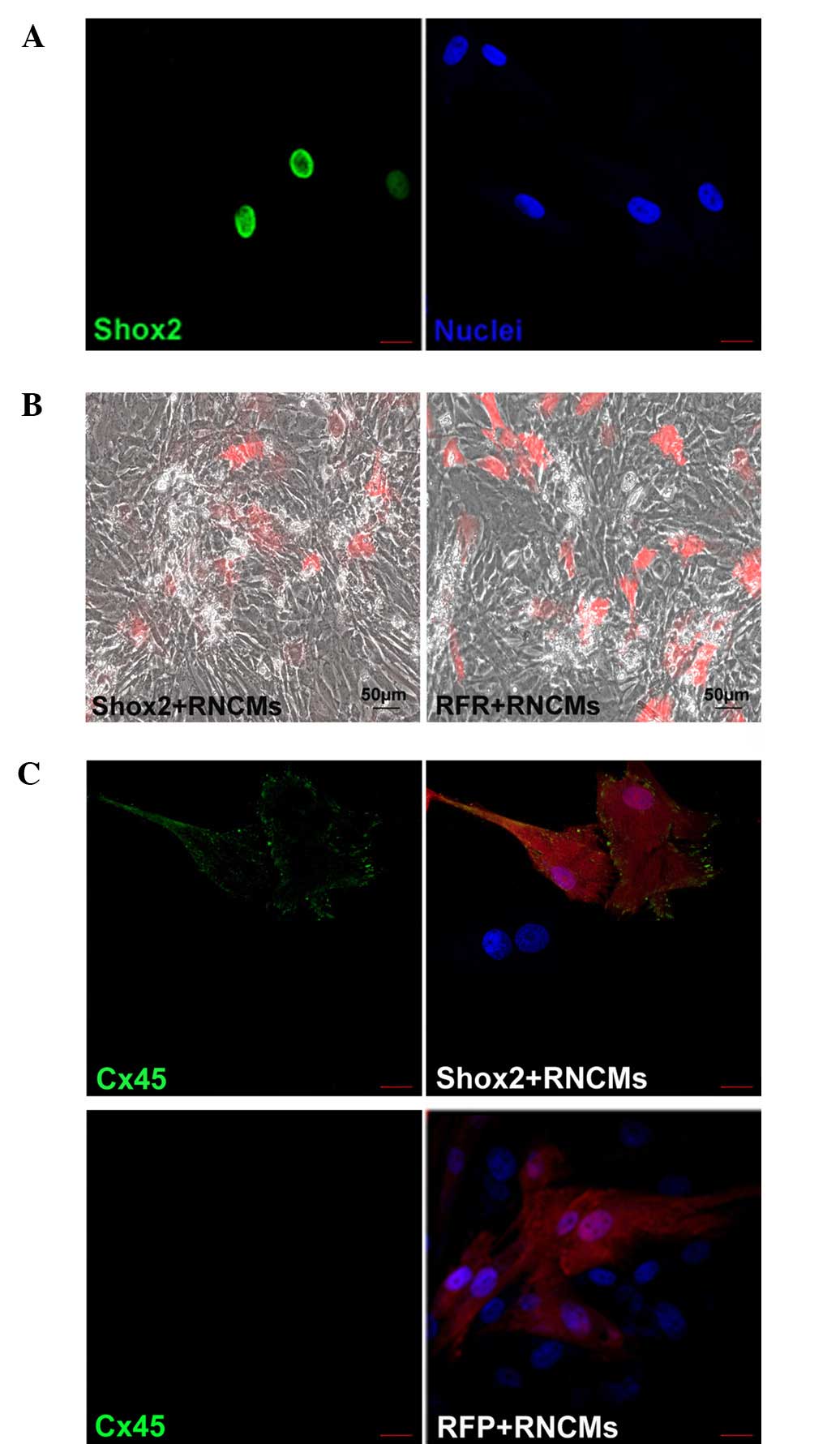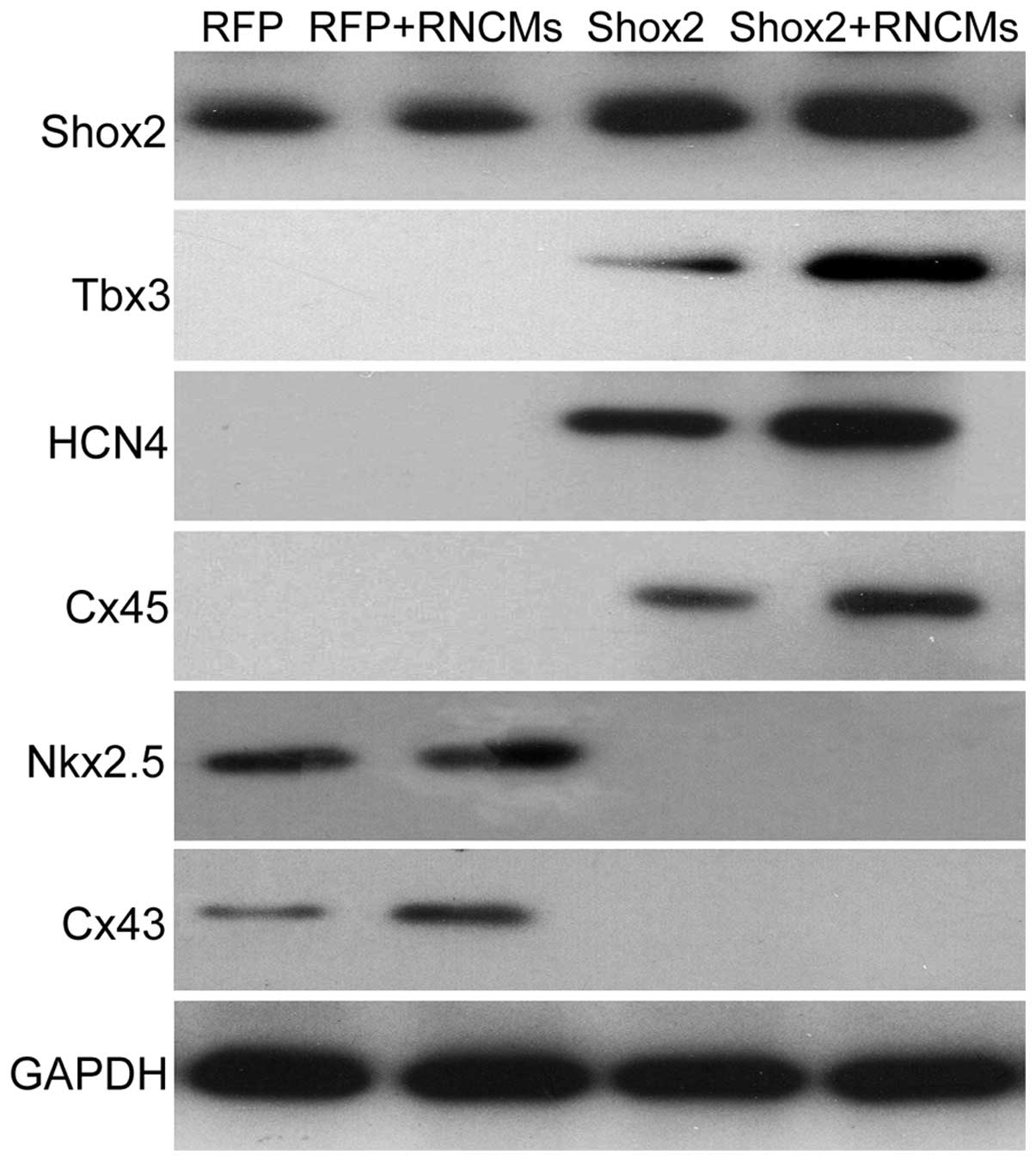|
1
|
Miake J, Marbán E and Nuss HB: Biological
pacemaker created by gene transfer. Nature. 19:132–133. 2002.
View Article : Google Scholar
|
|
2
|
Tong S, Yao Q, Wan Y, Zhou J, Shu M, Zhong
L, Li Y, Zhang Q, Yindai J and Song Z: Development of functional I
f channels in mMSCs after transfection with mHCN4: Effects on cell
morphology and mechanical activity in vitro. Cardiology.
112:114–121. 2009. View Article : Google Scholar
|
|
3
|
Jun C, Zhihui Z, Lu W, Yaoming N, Lei W,
Yao Q and Zhiyuan S: Canine bone marrow mesenchymal stromal cells
with lentiviral mHCN4 gene transfer create cardiac pacemakers.
Cytotherapy. 14:529–539. 2012. View Article : Google Scholar : PubMed/NCBI
|
|
4
|
Lu W, Yaoming N, Boli R, Jun C, Changhai
Z, Yang Z and Zhiyuan S: mHCN4 genetically modified canine
mesenchymal stem cells provide biological pacemaking function in
complete dogs with atrioventricular block. Pacing Clin
Electrophysiol. 36:1138–1149. 2013. View Article : Google Scholar : PubMed/NCBI
|
|
5
|
Cai J, Yi FF, Li YH, Yang XC, Song J,
Jiang XJ, Jiang H, Lin GS and Wang W: Adenoviral gene transfer of
HCN4 creates a genetic pacemaker in pigs with complete
atrioventricular block. Life Sci. 80:1476–1753. 2007. View Article : Google Scholar
|
|
6
|
Espinoza-Lewis RA, Yu L, He F, Liu H, Tang
R, Shi J, Sun X, Martin JF, Wang D, Yang J and Chen Y: Shox2 is
essential for the differentiation of cardiac pacemaker cells by
repressing Nkx2-5. Dev Biol. 327:376–385. 2009. View Article : Google Scholar : PubMed/NCBI
|
|
7
|
Espinoza-Lewis RA, Liu H, Sun C, Chen C,
Jiao K and Chen Y: Ectopic expression of Nkx2.5 suppresses the
formation of the sinoatrial node in mice. Dev Biol. 356:359–369.
2011. View Article : Google Scholar : PubMed/NCBI
|
|
8
|
Chang MG, Tung L, Sekar RB, Chang CY,
Cysyk J, Dong P, Marbán E and Abraham MR: Proarrhythmic potential
of mesenchymal stem cell transplantation revealed in an in vitro
coculture model. Circulation. 113:1832–1841. 2006. View Article : Google Scholar : PubMed/NCBI
|
|
9
|
Li Y, Li B, Zhang C, Zhang J, Zeng M and
Zheng Z: Effect of NRG-1/ErbB signaling intervention on the
differentiation of bone marrow stromal cells into sinus node-like
cells. J Cardiovasc Pharmacol. 63:434–440. 2014. View Article : Google Scholar : PubMed/NCBI
|
|
10
|
Wang T, Xu Z, Jiang W and Ma A:
Cell-to-cell contact induces mesenchymal stem cell to differentiate
into cardiomyocyte and smooth muscle cell. Int J Cardiol.
109:74–81. 2006. View Article : Google Scholar
|
|
11
|
Wen L, Zhang C, Nong Y, Yao Q and Song Z:
Mild electrical pulse current stimulation upregulates S100A4 and
promotes cardiogenesis in MSC and cardiac myocytes coculture
monolayer. Cell Biochem Biophys. 65:43–55. 2013. View Article : Google Scholar
|
|
12
|
Kim MO, Jung H, Kim SC, Park JK and Seo
YK: Electromagnetic fields and nanomagnetic particles increase the
osteogenic differentiation of human bone marrow-derived mesenchymal
stem cells. Int J Mol Med. 35:153–160. 2015.
|
|
13
|
Livak KJ and Schmittgen TD: Analysis of
relative gene expression data using real-timequantitative PCR and
the 2(-Delta Delta C(T)) Method. Methods. 25:402–408. 2001.
View Article : Google Scholar
|
|
14
|
Liu H, Chen CH, Ye W, Espinoza-Lewis RA,
Hu X, Zhang Y and Chen Y: Phosphorylation of Shox2 is required for
its function to control sinoatrial node formation. J Am Heart
Assoc. 3. pp. e0007962014, View Article : Google Scholar
|
|
15
|
Valiunas V, Doronin S, Valiuniene L,
Potapova I, Zuckerman J, Walcott B, Robinson RB, Rosen MR, Brink PR
and Cohen IS: Human mesenchymal stem cells make cardiac connexins
and form functional gap junctions. J Physiol. 555:617–623. 2004.
View Article : Google Scholar : PubMed/NCBI
|
|
16
|
Hoogaars WM, Engel A, Brons JF, Verkerk
AO, de Lange FJ, Wong LY, Bakker ML, Clout DE, Wakker V, Barnett P,
et al: Tbx3 controls the sinoatrial node gene program and imposes
pacemaker function on the atria. Genes Dev. 21:1098–1112. 2007.
View Article : Google Scholar : PubMed/NCBI
|
|
17
|
Wiese C, Grieskamp T, Airik R, Mommersteeg
MT, Gardiwal A, de Gier-de Vries C, Schuster-Gossler K, Moorman AF,
Kispert A and Christoffels VM: Formation of the sinus node head and
differentiation of sinus node myocardium are independently
regulated by Tbx18 and Tbx3. Circ Res. 104:388–397. 2009.
View Article : Google Scholar
|
|
18
|
Frank DU, Carter KL, Thomas KR, Burr RM,
Bakker ML, Coetzee WA, Tristani-Firouzi M, Bamshad MJ, Christoffels
VM and Moon AM: Lethal arrhythmias in Tbx3-deficient mice reveal
extreme dosage sensitivity of cardiac conduction system function
and homeostasis. Proc Natl Acad Sci USA. 109:E154–E163. 2012.
View Article : Google Scholar :
|
|
19
|
Söhl G and Willecke K: Gap junctions and
the connexin protein family. Cardiovasc Res. 62:228–232. 2004.
View Article : Google Scholar : PubMed/NCBI
|
|
20
|
Desplantez T, Dupont E, Severs NJ and
Weingart R: Gap junction channels and cardiac impulse propagation.
J Membr Biol. 218:13–28. 2007. View Article : Google Scholar : PubMed/NCBI
|












